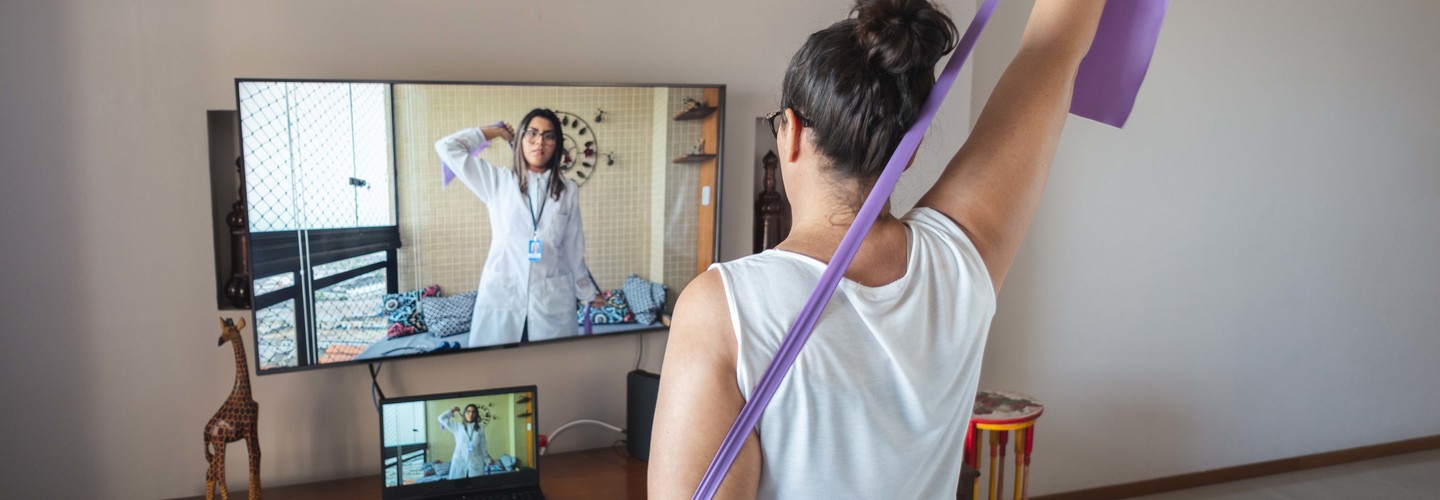
New Applications for a Pandemic-Tested Technology
Dr. Joseph Kvedar, immediate past chair of the American Telemedicine Association, says that the COVID-19 pandemic taught clinicians which use cases made the most sense for telehealth.
But even as healthcare providers settle into this new normal, he says, clinicians and IT vendors are continuing to explore ways to expand use cases by incorporating technologies such as virtual and augmented reality.
“There are great applications for virtual reality, particularly in behavioral health and for conditions such as phobias,” Kvedar says. “Overall, behavioral health is a good application for telehealth, because even the diagnostic exam usually involves talking to the patient, which you can do over video.”
The Asheville VA pilot kicked off in March with just a handful of veterans, but Rawlins says early results are promising. For one, she says, patients are more likely to adhere to their physical therapy programs when their at-home sessions don’t feel like work. In one module, veterans play a pinball game with their feet.
EXPLORE: Advancements in virtual and extended reality are transforming patient care.
Some veterans also use their VR headsets for apps that provide a distraction to assist with pain management — potentially helping them to reduce their reliance on medication.
This “productive distraction,” as Rawlins calls it, also helps users overcome previous limitations. For instance, some have improved their range of motion without realizing it while using a VR app.
“I’ve seen patients who have chronic shoulder issues trying to lift a baby bird into a nest in virtual reality, and all of a sudden they’re able to lift their arms higher than they have in 20 years,” she says. “They’re not focused on that fear of movement or that fear of pain.”
The applications and sensors from XRHealth that are being used in the VA pilot are compatible with a number of headsets, including the HP Pico Neo and the HTC Vive Focus. As the veterans use the apps, clinicians can not only monitor their progress but also make tasks easier or more difficult as needed.
Rawlins predicts that telehealth will continue to incorporate more technologies beyond video. “We’re already seeing that shift,” she says. “There’s a lot that you can do with the technology, and I think we’re still just scratching the surface of what is possible.”
NIH Adopts Tech for Seamless Telehealth Capability
In the early days of the pandemic, the Clinical Center at the National Institutes of Health began using a telehealth platform that runs on top of commercially available solutions such as Microsoft Teams, while also streamlining integration with other tech systems and offering one-button simplicity for users.
“One of the greatest features is that it’s a fully integrated platform,” says Tricia Coffey, chief health information officer for the NIH Clinical Center. “We have the ability to support not only virtual visits but also virtual rounding, where teams can round on patients even if the entire team isn’t here onsite. It also manages telehealth appointments, so we don’t have to set up multiple feeds to other systems.”
Before the organization adopted the solution, patients had to download a videoconferencing solution to their own devices to participate in telehealth appointments, notes Marisa Owens, assistant chief for patient engagement and system integration.
“The solution uses the default browser on the user’s device, which was huge for us,” she says. “We have a wide variety of ages in our patient population, so it’s nice that people can just click on a link and it brings up their visit.”
READ MORE: The U.S. military embraces telecritical care tech for service members and veterans.
The Clinical Center averages about 50 telehealth visits a day, with the NIH’s National Cancer Institute and the National Institute on Alcoholism and Drug Abuse being the largest users. Owens says telehealth is especially useful for follow-up appointments; the Clinical Center draws patients from around the country, and even for locals, traffic can make in-person follow-ups inconvenient.
This article was originally published on healthtechmagazine
